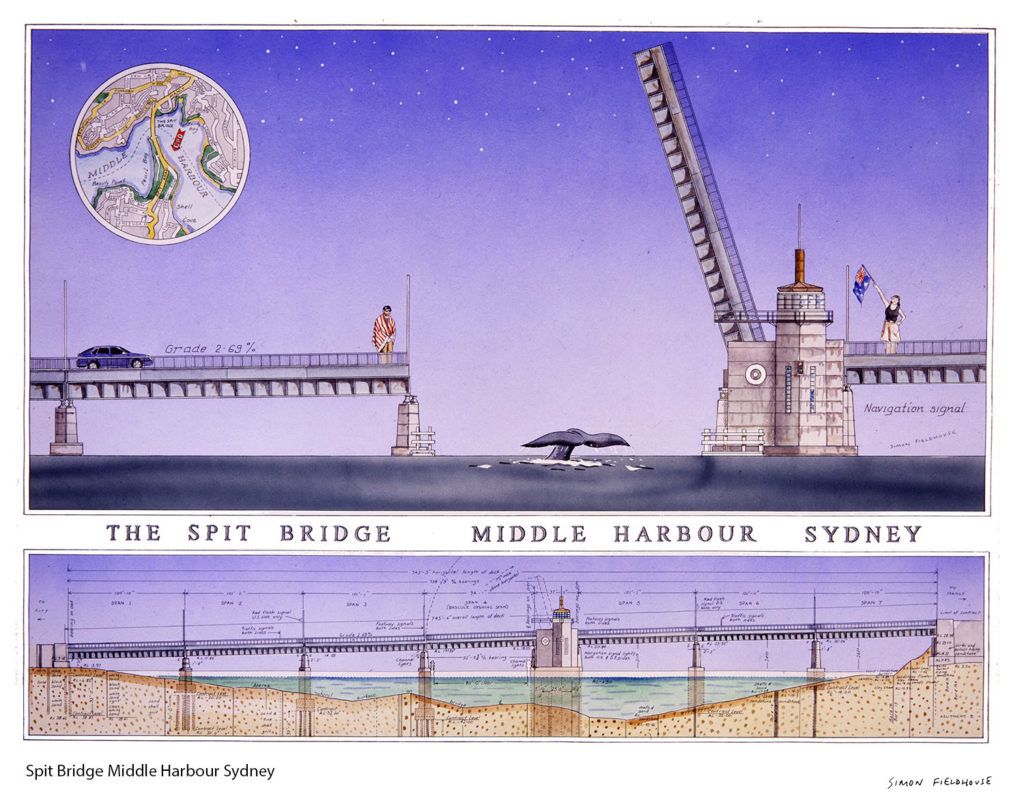
Spit Bridge Middle Harbour Sydney
Spit Bridge Middle Harbour Sydney. Construction of the current bridge had commenced in 1952 and after delays was completed in 1958; and opened on 19 November 1958.
The Spit Bridge over Middle Harbour can be described as a steel and concrete girder bridge with a bascule lift span. The Spit Bridge comprises 7 spans of a total length of 745 feet 6 inches (227.23 m), has four traffic lanes with a width of 44 feet (13 m) and a pedestrian walkway of 5 feet (1.5 m) on either side. There are three spans at either end of the opening span. Each of the six fixed spans have four welded plate girders as the main members, with cross girders, but without stringers or horizontal bracing. The concrete deck is dowelled to the steelwork. The opening span (Span 4) is a single-leaf bascule. It has two main girders, with cross girders and stringers, covered by an open mesh steel deck.[1]
The two footways are of concrete on the fixed spans, and steel on the bascule span. The piers either side of the opening span are flanked by fenders, and when the bridge is in the open position a navigation channel of 80 feet (24 m) wide is created. At the Mosman end the slab and two column piers rest on concrete piles driven into to the sands of the harbour bed at a depth of between 40 and 50 feet (12 and 15 m). At the Manly end the harbour bottom slopes up steeply to outcropping rock on which the northern abutment sits. Piers 5 and 6 are double cylinder piers sitting on bedrock below the harbour bed. The main pier which supports the bascule span is Pier 4. It rests on four cylinders taken down to sandstone bedrock at a depth of between 45 to 75 feet (14 to 23 m) which is 75 and 105 feet (23 and 32 m) below mean sea level. The pier is box-like and supports all machinery for the operation of the bascule, including the operator's cabin. The approaches and abutments at each end are varied due to the nature of the topography. The southern abutment is built up from the sandy beach level and has a retaining wall faced with stone on either side. The northern abutment is resting directly on the rock on the western side and is built up on the eastern side with a retaining wall. Due to the variation in ground level on each shore there is a grade of 2.68% from south to north. Traffic across the bridge is regulated by traffic lights at either end (located at the end of Spans 2 and 6) and by roadway gates which operate as the bridge is about to open.
The bridge has two traffic lanes in each direction, with a tidal flow system established, while the approaches to it have three lanes in each direction.